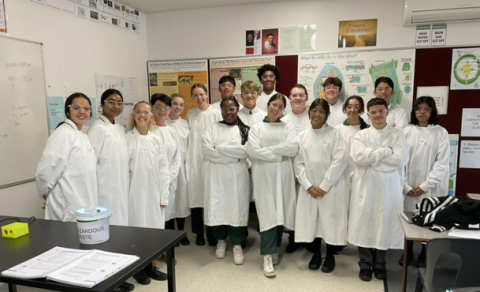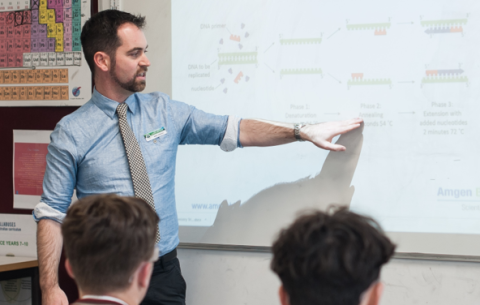Until relatively recently, the story of the discovery of the structure of DNA has gone something like: On April 25, 1953, James Watson and Francis Crick published in Nature the molecular structure of DNA as a double helix, just a couple months after reportedly running from the Cavendish Lab in Cambridge, UK, to the Eagle Pub where they announced they had discovered the secret of life. This story is now known as only part of the story. A pivotal contribution to this “discovery” was missing: Rosalind Franklin, an X-ray crystallographer, was actually the first person on record to see the helical structure of DNA, capturing it in Photo 51, which was shared with Watson and Crick.
Watson and Crick, along with Maurice Wilkins, would receive the 1962 Nobel Prize in Physiology or Medicine, excluding Franklin who passed away in 1958—and they would fail to credit Franklin until decades later. Fortunately, contemporary students will now learn the full story as they celebrate International DNA Day this year, and for some students in Australia, that celebration will include a unique lab that will give them a taste of what that “aha moment” was like for Franklin some 70 years ago.
In a new project led by two Amgen Biotech Experience (ABE) teachers, Jo-Anne Donaldson and Aidan Johnson, junior science students will recreate Franklin’s X-ray diffraction moment in a clever lab using coils and lasers. Donaldson and Johnson, both at secondary school John Therry Catholic College outside Sydney, Australia, created the lab to teach their students about creativity and collaboration in science.
“It’s important to highlight to students that thinking creatively is important in science. Science discovery isn’t always straightforward, and great scientific discoveries have been made applying previous knowledge of science,” Donaldson says. “Rosalind Franklin played such an important role in the discovery of the structure of DNA, and it’s important to highlight that.”

Students at John Therry Catholic College in Sydney, Australia
This new interactive lab is funded through an ABE Mini-Grant awarded to Donaldson and Johnson as Master Teacher Fellows. This month, they will receive equipment to begin the project with their junior students.
“We could see the impact ABE was having on our seniors and wanted a project we could roll out en masse to the junior students to get them engaged and excited early on in their science education,” Johnson says. He specifically thought of the idea for the lab after conducting some experimenting with senior students: shining a laser through a nichrome wire coil and seeing the diffraction pattern of the laser light on a white wall behind the coil.

Aidan Johnson giving an ABE lesson on DNA
“In this way, students could see the sort of image that Rosalind Franklin saw when she diffracted X-rays through DNA,” Johnson explains. “What is really cool is that you can stretch the coil, which allows students to see how the size of the coil, or how tightly it is wound, affects the diffraction pattern and, hence, to understand that mathematics can be used to accurately predict the structure from this simple pattern.”
To make the experiment easier to replicate, a physics teacher at John Therry suggested getting an optics bench to support the laser light to shine through. Johnson then presented this idea to longtime collaborator Donaldson, and the Mini-Grant idea was off and running—to create a fun and interactive experience that models the discovery of DNA while developing students' foundational knowledge of DNA structure in preparation for ABE in their senior year.
“Student engagement is the main aim,” Donaldson says. “We want to show students that having a growth mindset—taking a risk and learning from mistakes—is what success can look like in science.”
Donaldson and Johnson are excited to see what happens when their students make the connection between the shape of the wire coil and Photo 51 produced by Rosalind Franklin—that “light bulb” moment teachers love to see. It’s ultimately, Johnson says, about engaging students in deep thinking and problem solving. He also wants students to see how quickly the development of human knowledge around DNA has developed new technologies.
The teaching duo has already presented the idea at a conference, garnering interest from teachers around New South Wales (see the proof of concept video they presented). The hope is to instill in students a new way of thinking about scientific discovery—as a series of collaborations that recognize different contributions and lead to new discoveries as knowledge builds over time.
View Donaldson’s and Johnson’s Master Teacher Fellow products below:
- Why Is Scientific Research Regulated? – Jo-Anne Donaldson
- Stage 6 Science: Investigating Science – Aidan Johnson
